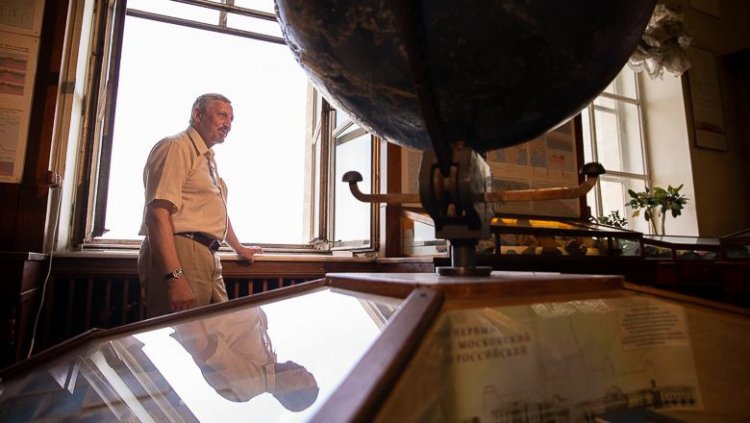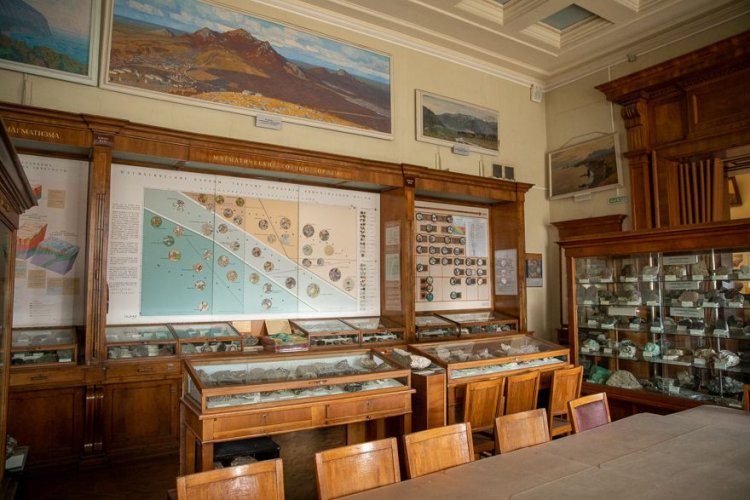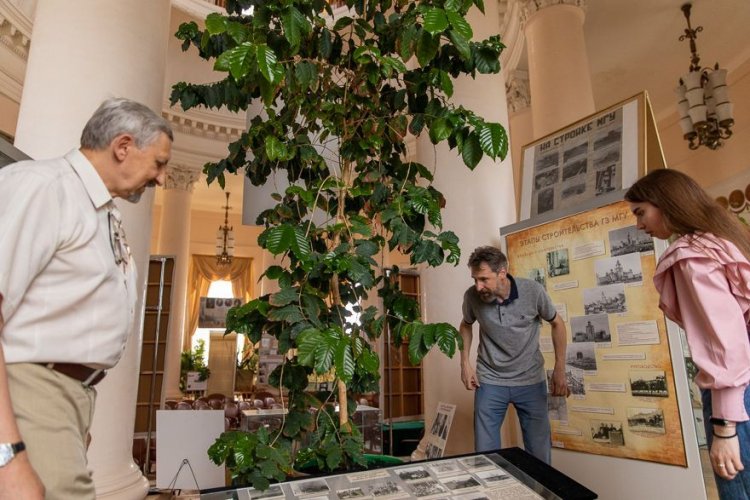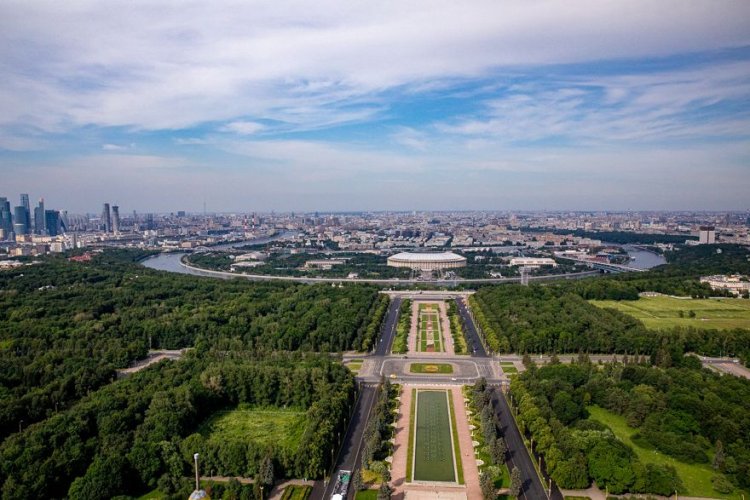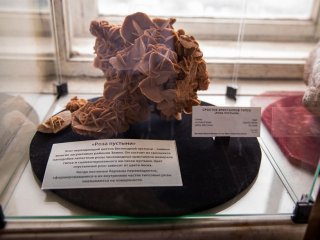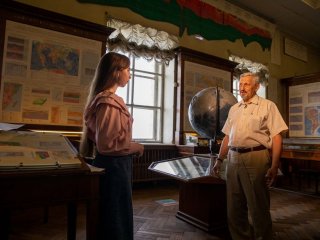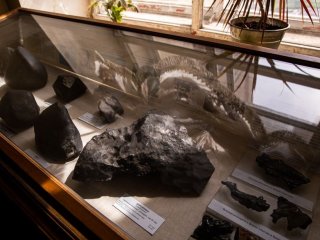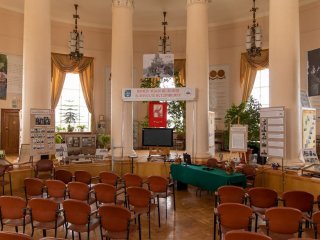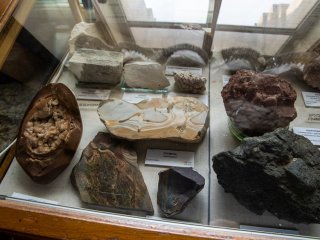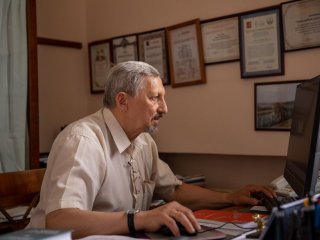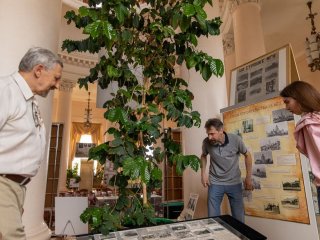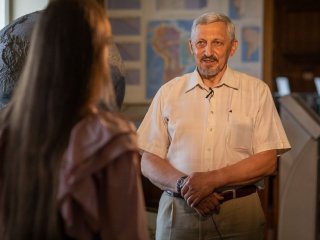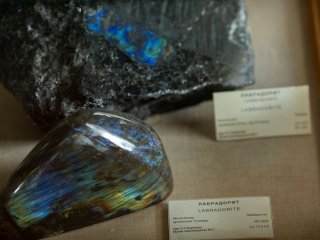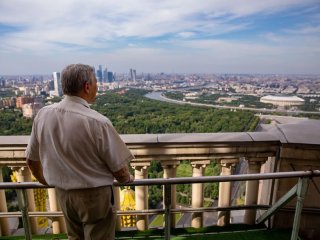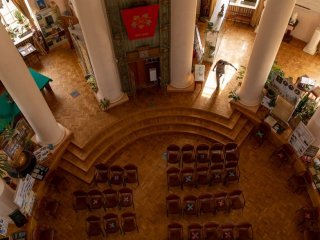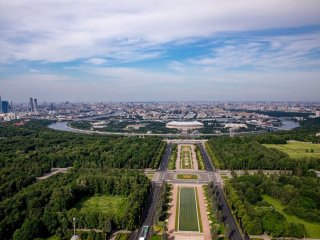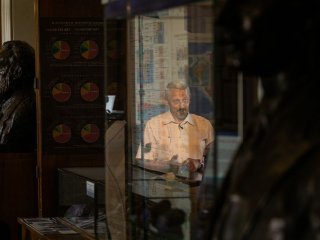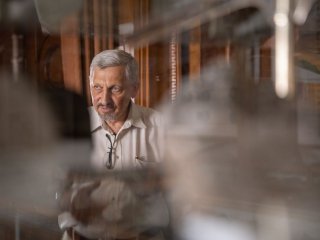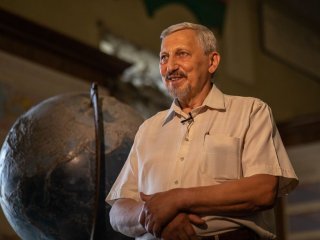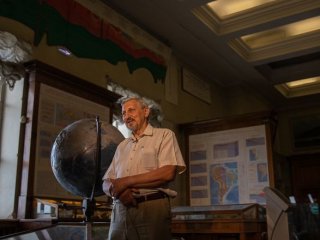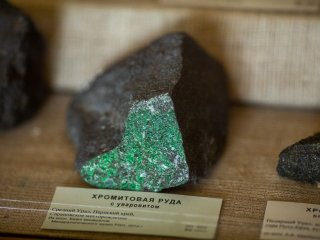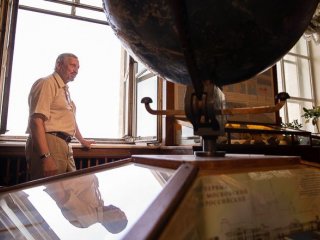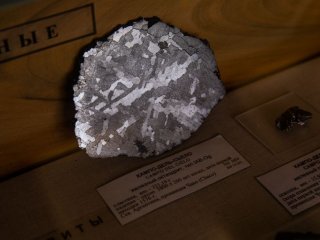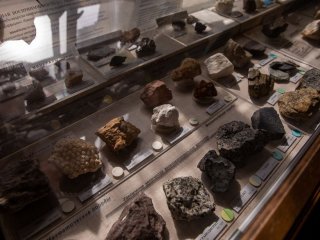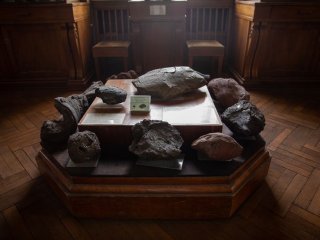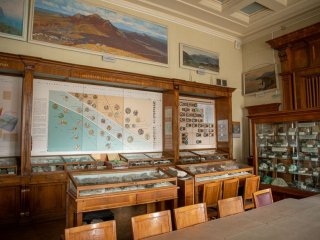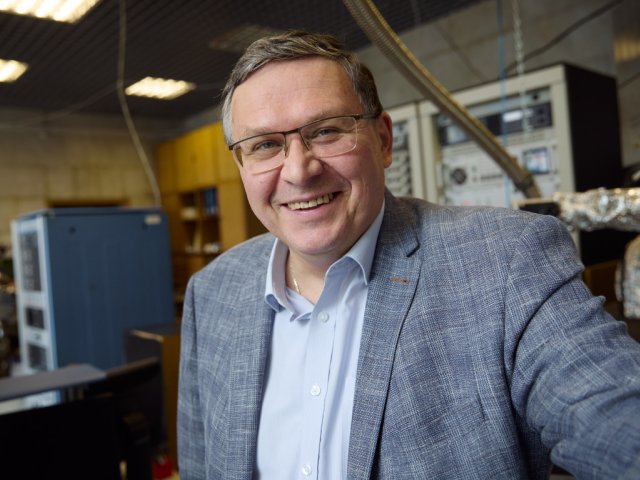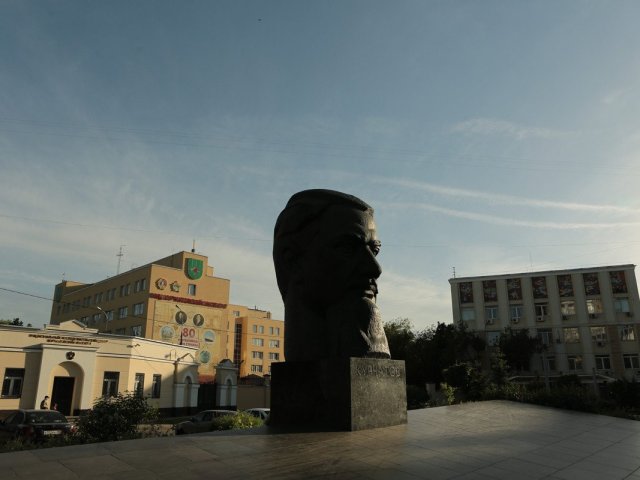The Earth Science Museum of Lomonosov Moscow State University amazingly brings together all sciences that study Earth: from geography to soil science. The museum’s director is Andrey Valerievich Smurov, Professor, Doctor of Biology, and a specialist in environmental diagnostics and preservation of biodiversity. We have talked with him about metropolis inhabitants and nature preservation in the urbanization era.
– Andrey Valerievich, which sciences does the Earth Science Museum combine?
This is not exactly a museum but rather a scientific and academic division of Moscow State University that engages in science, training and education and has a representative function as well. There is a broad range of sciences represented here. The most important ones are Earth sciences, as you said: geology, geography, soil science, and, to a significant extent, biology. But there are also other sciences that look directly into the issues humankind is concerned about. I mean environmental issues, i.e., issues related to the way the world works, the place of humans as part of the biosphere, and the issue of finding ways to ensure preservation and continuation of humanity and civilization on Earth through sustainable development and building a comfortable habitat rather than an unliveable one, with a ruined environment.
– Within the Year of Science and Technology, the theme for July is development of new territories. What is the core difference between urbanized areas and areas that people have never set foot in?
The difference is that areas referred to as natural take a very long time to form. Landscapes change over millennia, sometimes even through millions and dozens of millions of years, while people transform nature rapidly, giving it no time to adapt.
Another important factor associated with human activities is the fact that people split land into fragments as they build roads, pipelines, power lines, and canals. All these things greatly affect the capacities of natural area development. In short, that is what human impact is like.
Besides, there is of course urbanization; huge areas change entirely. Where there used to be a field or a forest, now there is a city, a settlement, or a farmland instead of natural meadows. This also has a serious impact on the composition of species that live in the area after urbanization. One reason for this is that people normally bring in alien species. We all like growing flowers, while most cultivars are not natural plants. Some of them are quite aggressive. A glaring example of that is a plant that people tried and failed to turn into a crop – the giant Sosnowsky's hogweed. Efforts are being made to fight it because the species, alien to central Russia, has invaded vast areas.
– You mean it was brought in artificially, by people?
Yes. This species seemed promising as livestock feed, but it turned out to be making milk bitter. Moreover: do you know that this plant is toxic, at least for humans, causing severe allergic reactions and burns? There is quite a lot of such alien plants. For instance, eucalyptus in Europe. It is an Australian species that now can also be found in many subtropical areas elsewhere, supplanting many native species in the Mediterranean region.
– How much does development, with high-rise housing, roads, and asphalt pavement, affects the development trajectory of a natural area in general?
The impact is drastic, because many species that live in forests cannot live in a city. Most species living on natural meadows cannot survive in a city either. First of all, a very large number of species depend on specific cenoses – communities. Such species cannot survive outside their community where everything is closely interconnected. There are consortia or symbiocenoses within biocenoses, with unbreakable connections. However, there are species capable of adapting to a city. Not too many, although urban biodiversity is quite high. Especially in cities with green zones, such as Moscow. There are numerous mammals and birds in such zones, who have adapted to life in urban conditions. There are beavers in the floodplain of the river Setun; their population has increased, and local residents say there are many of them, girdling trees and building dams. Still they need the environment in which the species developed and lives. Many animals can’t live in the urban conditions. However, there are synanthropic species , which can only live in the urban conditions. Those are rats, house mice, and roaches. People don’t like them one bit.
– Can new biological species arrive along with humans and stay?
Actually, it’s the most common scenario, because species can compete best. There are multiple examples of that, and not just with plants. For instance, there is the raccoon dog, which was brought in from another continent. And Australia experienced the phenomenon most strongly when placental animals had been brought in there. It was a convergent revolution: there were Tasmanian wolves, hedgehogs, and numerous other non-placental animals. With placental animals brought in, the local fauna started to become extinct. However, some species did adapt. Kangaroos did, for example. Humans are competing with all species. The first thing humans do once they've arrived in a new area is clearing it, for farmland or construction. This causes biodiversity issues and land fragmentation problems. Special protected natural areas, reserves are relatively small, where they exist at all. Especially those in urban areas. We have a major urban sanctuary in Moscow – the Losiny Ostrov National Park. Not many urban areas have such things. All the same, this area is segregated; therefore, large animals that would normally migrate and mix their genes with animals from other areas cannot do so due to the segregation, which results in inbreeding. This leads to degradation and eventual extinction of the population. That is, biodiversity declines.
- Есть какой-то компромисс?
Есть. Компромисс заключается в сохранении эталонных территорий, где сохраняется биоразнообразие.
– Is there a trade-off?
There is. The trade-off is in preservation of reference territories in which there is biodiversity.
– Are there such territories in Moscow?
Not in Moscow city, but there are some in Moscow Region, although very few as well. Those are untouched areas, several dozens of km from Moscow, with large forest zones free from cottage construction and waste disposal processes. You know that huge areas in the outer Moscow are being used for landfills, a typical issue for metropolitan areas.
There is another path Moscow State University is working on; it has even been patented. I’m talking about preservation of populations in fragmented areas. This method has been used in zoos for a long time. It’s about mate selection, e.g., when there is a tigress in Germany and a tiger in Moscow, gene screening and biodiversity monitoring are performed. An isolated population has particular genes, so specimens could be selected and introduced into populations with low biodiversity in order to increase biodiversity and maintain it for a long time.
– If urbanization is inevitable, can we really stop its negative consequences?
Design is the best way. Human civilization and population have become so large that we have to design the environment by using the fundamental laws of science. As for the laws of biology, they are very well known: if the resources required for sustenance are available, any biological species, including humans, will multiply exponentially, as proven by the Technological Revolution. New resources, such as new energy sources, technologies, medications, etc., produced by the Technological Revolution led to the exponential growth of the human population. It is a very well-known biological law: with resources available, the species population grows exponentially.
But land can be one of such resources since the globe surface area is finite. Humanity has started thinking about colonizing Mars, the Moon – the nearest planets at least.
The second fundamental law is about limiting factors. When the population has reached a certain threshold, limiting factors come into play. Including disease. When the population has reached the maximum even locally, regular conflicts within and between the species are inevitable, including various epidemics, and in the modern world, even pandemics. Due to the novel coronavirus, we keep hearing: “Observe social distancing!”
The third law is competitive exclusion. If two species are competing for a resource or a set of resources, one of the species will die out or become extinct, or move to another complex, or symbiosis will occur. That is what happens with most living beings. On average, 5 kg of living organisms live in every adult person; we can’t live without them, while they can’t live without us. A newborn often possets its mother’s milk as it lacks the gut fauna and flora yet. And there is no question of a baby eating bread or sausage. That comes later as symbiotic relations with the micro world inside us developing. Some elements of that micro world become pathogenic under certain conditions. For instance, flagellates or amoebae inside us may become pathogenic. However, we need them and they need us.
– Do you mean that solution is in forecasting?
Of course. It is in the knowledge of the fundamental scientific laws of the world, including biology laws, which are important since we are biological objects, and now we’re subjects of evolution as well.
Humans are the only species on Earth that consciously builds their existence using knowledge.
– Could new technologies based on such knowledge be used to preserve biodiversity?
The notion that new technologies alone can save Nature is an illusion which is over 100 years old. Compared to when life on Earth started and developed, barely a second has passed since the start of the Technological Revolution. Natural geological and biological evolutionary processes – formation of new species and landscapes – took tens and hundreds of millions of years. But human history and human life processes are much faster. For instance, it’s been around 150 years since the Technological Revolution, but the changes are colossal. So much new machinery and devices have been produced, especially in the last 10 years – there’s been an information explosion. We learn new things and get new technologies literally every day. However, new problems arrive as well. Nanoparticles, for instance. Nobody knows their effect on people. It turns out that nanoplastic is bad for aquatic life. Every technology is like yin and yan: there is always black and white. Nuclear energy is both an atomic bomb and a power plant. Nanotechnologies are both progress and potential environmental pollution, possible disruption of a comfortable human habitat.
Only science and fundamental knowledge of Earth and Life based on the technologies that they themselves generate may help design a self-sustaining, comfortable living environment for people.
We can't keep the world as it is because of the ongoing evolution. The most recent ice age ended only 10,000 years ago. Here, where Moscow is today, there used to be tundra and some ice tongues. All things change, and there is nothing people can do about it. The only thing we can is, knowing fundamental laws, predict and design the environment. Humans are the only species that is both a subject and an object of evolution. The solution is science.
– Andrey Valerievich, you developed the methodology and content of a new branch of science — environmental diagnostics. Could you tell us about it?
On the basis of a set of physico-chemical and biological characteristics, environmental diagnostics enables objective assessment of environmental risks for people and other animal and plant species in a given location. Why? At present, quality assessment of the environment is almost exclusively based on physico-chemical indicators: How much sulphur dioxide or phenol is there? Has the MPC been exceeded? Those indicators differ greatly from one country to another, and are adjusted frequently, often depending on the current situation. Since we are a biological species, the human body can adapt – this is what the evolutionary process is based upon. But the rate and range of adaptations differ both between and within species. Even though Moscow is a relatively clean city, many Moscow residents get headaches when they go to the country or into a forest, where there is more oxygen and no smog. This happens, because such places have a normal oxygen level – 21%, the level in Moscow being a bit lower. But we have adapted. Many people don’t mind breathing such air, and they don’t feel unwell, when the oxygen content is normal.
– Why do people change everything around them then?
There isn't a single living being that doesn’t change anything around it. All of them: from microbes to humans adjust the environment to fit their needs. Ants build anthills, birds build nests, humans do the same. But people are capable of doing it on the basis of their knowledge. That is, people can think about the outcome of their actions, and they try doing so, albeit not always successfully.
– If humans change everything around them, does this mean they are less adaptable than animals are?
No, humans are much more adaptable. They adapt to any conditions by using technology and knowledge. For instance, animals in central Russia with distinct seasons have to shed hair, while people take off their fur coats in warm weather and put them on when it’s cold. If it’s really cold, people can make a campfire. One of the main achievements of the human race is learning how to control oxidation of energy accumulated in plants. That carbon dioxide, which photosynthesis turned into wood, and the mineralization process – into coal. People learned how to use it as an energy source. And not just to keep themselves warm, but to heat water, produce water steam from the liquid phase, then make steam engines and so on, all the way to spaceships.
– Now, the public is concerned that urban architecture is deadly for animals. For instance, birds fly into glass that reflects trees. There is even a new approach in the West – friendly architecture. Do we have it in Russia?
Of course. Buildings in Moscow are designed so as to allow co-existence. Actually, Moscow is a very green city. There are birdview panoramas of Moscow and Paris displayed on the 24th floor of the museum. So one can take a look and see which city is greener.
– Is Moscow greener than Paris?
By far. Many visitors to Moscow State University agree that Moscow is very green when they see the panorama.
– Is Moscow better for biodiversity than regional centres?
At least, according to biodiversity assessment covering all animals living in all green zones of Moscow, there is quite a lot of biodiversity. As regards friendly architecture, birds don't crush into glass that often in Moscow. Besides, there is an introduction program, including some birds from the IUCN Red List of Threatened Species. For example, peregrine falcon, which nearly disappeared from Moscow due to human activities. Our university, jointly with the Nature Institute, introduced peregrines, and now there are several peregrine families living in Moscow.
– The issue of improving the population’s environmental literacy gets more acute every year. Can it be resolved?
There are several avenues for that: firstly, environmentalization of education. This country used to have environmental education from daycare to professional level. Now, it turns out we need specialists. Environmental protection has legal aspects, where nobody can compete with a professional lawyer. There are also tasks concerning journalists. At one time, there were environmental literacy courses for journalists. But the current approach is to create schools to produce specialists. For example, Moscow State University created a school comprising the departments of biology, geography, chemistry, and soil science, in order to train specialists that will be needed to build the environment based on fundamental knowledge.
As for environmental literacy, it is primarily about world view.
At the time when the Marxist-Leninist philosophy was taught, everyone had to know it. It’s the same with environmental literacy. It’s not scholasticism or an environmental dogma. It’s something that concerns everyone. Everyone wants a decent life, with a high standard of living and a comfortable environment. To achieve this, everyone needs to understand very early on that people are just a small part of the world around us. A thinking part. It can design its actions based on knowledge. And not just for its own benefit, but for the good of things and beings around: not just people, but plants and animals that give people oxygen and food or, to put it in scientific terms, provide ecosystem services.
